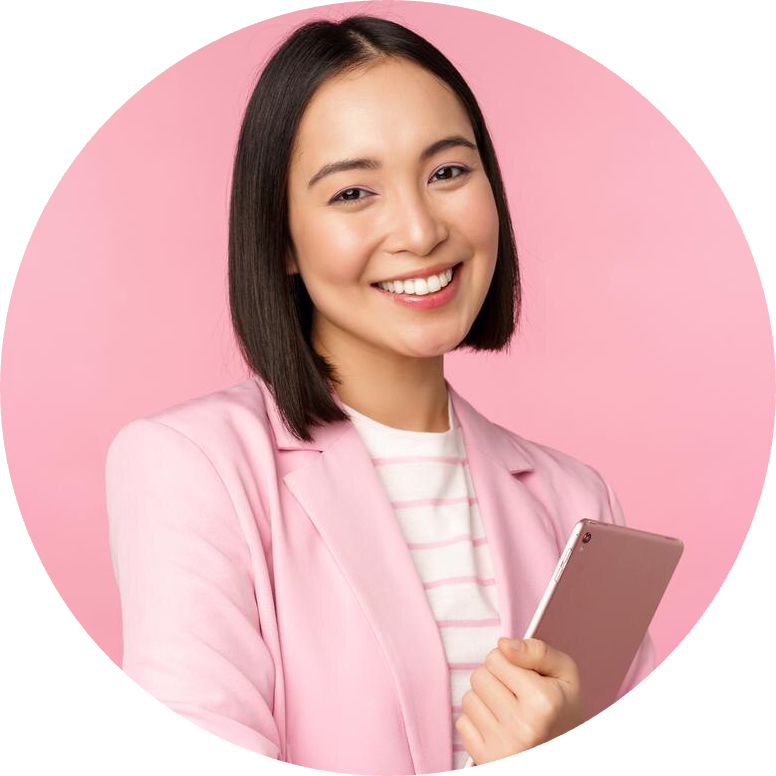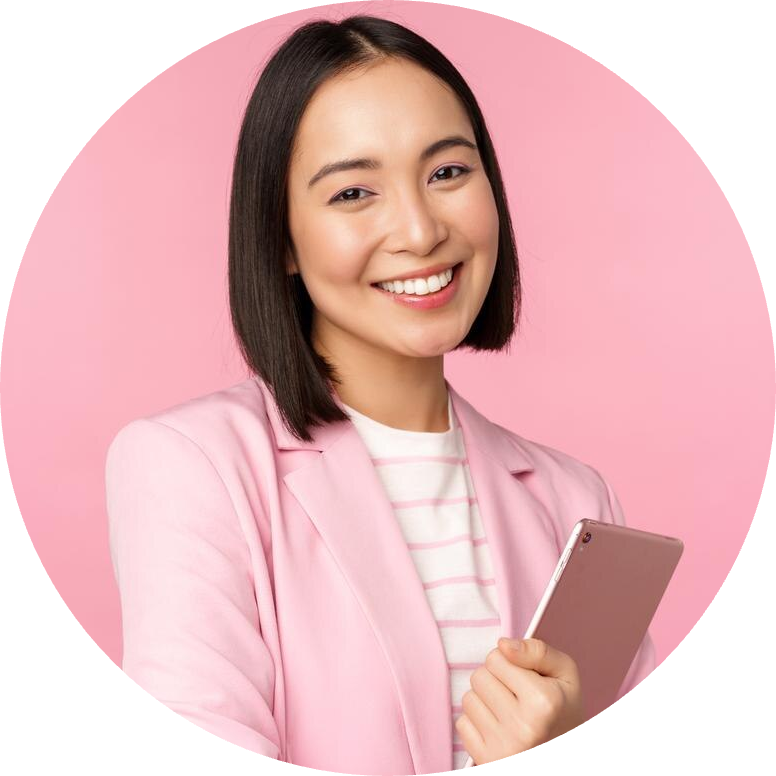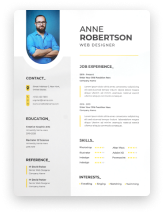In this guide, we teach you everything you need to know about mastering the critical first impression of your cover letter. Your opening sentence can set the tone for your entire application, distinguishing you from countless other candidates. It's not just about saying the right things; it's about conveying your unique value proposition in a way that resonates with the employer. From understanding the purpose of your cover letter to crafting that perfect first sentence, we delve into strategies, tips, and examples to help you make an unforgettable opening statement. Get ready to transform your job application game with insights that will not only make your cover letter stand out but also align perfectly with your career aspirations.

I. Introduction
The Importance of a Strong Opening in a Cover Letter
The opening of your cover letter is much more than a mere formality. It's your first opportunity to grab the attention of the hiring manager and set the stage for everything that follows. A well-crafted opening can distinguish your application from a sea of others, compelling the reader to delve deeper into your qualifications. It's about making an impactful first impression, one that resonates and sticks with the employer long after they've moved on to the next application.
Overview of What the Article Will Cover
In this article, we'll explore the various elements that contribute to an effective cover letter opening. We'll dissect the purpose of a cover letter, delve into pre-writing considerations, and provide actionable strategies for crafting an engaging opening sentence. Additionally, we'll cover personalization, tone setting, expressing enthusiasm, and connecting your skills to the job requirements. Throughout, we'll offer examples, common mistakes to avoid, and pro tips to ensure your cover letter's opening is as compelling and effective as possible.
II. Understanding the Purpose of a Cover Letter
Defining a Cover Letter
A cover letter is a crucial document that accompanies your resume, serving as a personalized introduction to potential employers. It's not merely a summary of your resume; rather, it's your chance to narrate your professional story, highlighting key experiences and demonstrating how they align with the specific job you're targeting. A well-written cover letter can effectively convey your enthusiasm for the role, showcase your personality, and provide insights into your career motivations and goals.
The Role of the Cover Letter in Job Applications
In the job application process, the cover letter plays a pivotal role. It's your first direct communication with the employer, offering a glimpse into who you are beyond your professional achievements. This document helps employers understand why you're interested in the role and how your background makes you an ideal candidate. It's an opportunity to explain any gaps or unique circumstances in your resume and to argue persuasively why you would be a valuable addition to their team.
III. Pre-Writing Considerations
Researching the Company and Position
Before you pen the first line of your cover letter, thorough research is essential. Understand the company's values, culture, and recent achievements. Familiarize yourself with the specifics of the position you're applying for. This knowledge not only helps you tailor your cover letter but also demonstrates your genuine interest in the company and the role.
Tailoring Your Approach to the Job Description
Aligning your cover letter with the job description is crucial. Identify the key skills and experiences the employer is seeking and reflect on how your background matches these requirements. This tailored approach shows the employer that you've taken the time to understand what they're looking for and have the qualifications to meet their needs.
Here's how tailored research can enhance your cover letter:
If the job description emphasizes a need for a team player with strong communication skills, illustrate this with a specific example from your experience, such as leading a successful project team or resolving a challenging customer service issue.
IV. Crafting the Opening Sentence
First Impressions: The Power of the First Sentence
The opening sentence of your cover letter is more than just an introduction; it's your first chance to captivate the reader. This sentence sets the tone for the entire letter and can determine whether the hiring manager keeps reading. An impactful first sentence can differentiate you from other applicants, highlighting your creativity, enthusiasm, and suitability for the role.
Strategies for an Engaging Start
To craft an engaging opening sentence, consider starting with a compelling fact about the company, a succinct summary of your professional identity, or a brief anecdote that reflects your passion and alignment with the company's values. Be authentic and enthusiastic, and ensure that your opening directly addresses the position and company.
Examples of Effective Opening Sentences
Effective Opening Sentence:
"As a long-time admirer of XYZ Corporation's innovative approach to environmental sustainability, I was thrilled to see the opening for a Project Manager, a role where I can contribute my 10 years of experience in leading successful green initiatives."
V. Addressing the Employer
The Importance of Personalization
Personalization in a cover letter is key to making a strong connection with the employer. It demonstrates that you've taken the time to tailor your application and shows your genuine interest in the company and the role. Addressing your letter to a specific person rather than using a generic salutation can make a significant difference.
Finding the Right Contact Person
If the job listing doesn't specify a contact person, do some research. Check the company's website, LinkedIn, or even call the company's front desk to inquire. Addressing the letter to a specific individual, such as the hiring manager or department head, adds a personal touch that can set your application apart.
Using the Correct Title and Address
Ensure that you use the correct title and address format for the person you're addressing. This attention to detail shows professionalism and respect. For example, use "Ms." or "Mr." followed by their last name, unless you're certain of their preferred title.
Correct Way to Address the Employer:
"Dear Ms. Johnson," or "Dear Hiring Manager," if the specific name isn't known.
VI. Setting the Tone
Professional Yet Engaging: Striking the Right Balance
The tone of your cover letter should be professional yet engaging. It's important to maintain a balance that demonstrates your respect for the employer and the seriousness of your intent, while also showcasing your personality and enthusiasm. The tone should reflect both your professional demeanor and your ability to relate on a personal level.
Adapting Your Tone to the Company Culture
Understanding and adapting to the company culture is crucial in setting the right tone. For a startup, a more casual and creative tone might be appropriate, while a traditional corporate environment might call for a more formal approach. Researching the company beforehand can provide valuable insights into the appropriate tone.
Adapting to Company Culture:
In a cover letter to a tech startup, you might say:
"I'm excited about the opportunity to bring my innovative problem-solving skills to a team that's constantly pushing the boundaries of technology."
For a corporate law firm:
"I am eager to apply my rigorous attention to detail and in-depth legal knowledge in a prestigious and challenging environment like yours."
VII. Highlighting Your Enthusiasm
Expressing Genuine Interest in the Role and Company
Your enthusiasm for the position and the company should shine through in your cover letter. This isn't just about stating that you're excited about the job; it's about showing why. Connect your personal values, career goals, or professional passions with what the company stands for or what the role entails.
Avoiding Overused Phrases and Cliches
Steer clear of generic statements like "I'm a perfect fit for this role" or "I've always wanted to work for your company." Instead, provide specific reasons why you are interested in the role and how it aligns with your career trajectory or personal interests.
Expressing Genuine Enthusiasm:
"Joining XYZ Company as a marketing specialist excites me because of your commitment to innovative consumer engagement strategies, which aligns perfectly with my creative approach and experience in cutting-edge digital marketing."
VIII. Connecting Your Skills to the Job Requirements
Identifying Key Skills and Experiences
When drafting your cover letter, carefully examine the job description and identify the key skills and experiences required. Reflect on your career to find instances where you've demonstrated these abilities. This process ensures that your cover letter directly responds to the employer's needs, making it clear that you possess the qualifications they seek.
Making a Direct Connection to the Job Description
Once you've identified your relevant skills and experiences, explicitly connect them to the job requirements. This involves more than just stating you have the skills; it involves demonstrating how you've used them effectively in the past. Use specific examples to illustrate your achievements and how they've prepared you for this new role.
Linking Skills to Job Requirements:
"If effective team leadership and innovative problem-solving are what you seek in your next project manager, my experience in leading a cross-functional team to develop a groundbreaking mobile application aligns perfectly with these needs."
IX. Showcasing Your Unique Value
What Makes You Stand Out?
In a competitive job market, it's crucial to differentiate yourself from other candidates. Your cover letter should highlight what makes you unique. This could be a rare combination of skills, a unique professional background, or a distinctive approach to work. Think about what sets you apart and how it can be an asset in the role you're applying for.
Integrating Your Unique Selling Points Early On
Your unique selling points (USPs) should be integrated into your cover letter from the beginning. This doesn't mean just listing your skills, but weaving them into your narrative in a way that showcases their relevance and impact. Relate your USPs to the needs and goals of the company, demonstrating how they align with the role.
Showcasing Unique Value:
"My background in both graphic design and digital marketing offers a unique blend of creativity and analytical skills, enabling me to develop campaigns that are not only visually striking but also data-driven and effective in reaching target audiences."
X. The Transition to the Body of the Cover Letter
Seamlessly Moving from Introduction to Main Content
The transition from your opening to the body of your cover letter is critical. It should be smooth and logical, leading the reader naturally into the more detailed section where you elaborate on your qualifications and experiences. This transition is your opportunity to shift from capturing the reader's attention to demonstrating your suitability for the role in greater detail.
Ensuring a Smooth Flow
To ensure a smooth flow, your transition should link the introduction's themes to the body's content. If your opening focuses on your enthusiasm for the role, the body could expand on this by detailing relevant experiences and achievements. The key is to maintain coherence and continuity, making your cover letter a cohesive and compelling narrative.
Effective Transition Example:
"After witnessing XYZ Company's commitment to innovation firsthand, I am eager to bring my expertise in project management and process optimization to your dynamic team. In my current role at ABC Inc., I spearheaded..."
Use transitional phrases like 'This passion led me to...', 'Building on this experience...', or 'With this background, I...' to create a seamless link between your introduction and the main body of your cover letter.
XI. Common Mistakes to Avoid in the Opening
Overused Opening Lines
One of the biggest mistakes in cover letter writing is using overused and cliched opening lines. Phrases like "I am writing to apply for..." or "I am excited to submit my application for..." are so common that they lose impact and fail to differentiate you from other candidates. These openings can make your letter blend in rather than stand out.
Being Too Vague or Generic
Another common pitfall is being too vague or generic in your opening. Your cover letter should immediately convey why you are a good fit for this specific role at this specific company. Generic statements fail to make a strong connection with the reader and don't demonstrate that you've done your homework about the company and the role.
Incorrect Example:
"I'm applying for your open position because I want to advance my career in a reputable company."
Correct Example:
"Driven by a passion for innovative marketing strategies, I was excited to come across the Marketing Manager role at XYZ Company, known for its boundary-pushing campaigns."
XII. Editing and Refining Your Opening
Reviewing for Clarity and Conciseness
Once you have written your opening, it's crucial to review it for clarity and conciseness. A clear opening ensures that your main message is understood immediately, while conciseness keeps the reader's attention. Remove any fluff or unnecessary words that don't add value to your message.
Seeking Feedback and Making Adjustments
It's always beneficial to get a second opinion. Seek feedback from mentors, colleagues, or professional contacts, especially those familiar with your industry. They can provide insights on how your opening might be perceived and suggest improvements. Be open to their suggestions and willing to make adjustments to enhance the impact of your cover letter.
XIII. Additional Tips and Tricks
Using Active Voice
Active voice makes your writing more direct and dynamic, which is essential in a cover letter. It demonstrates confidence and decisiveness. For example, instead of saying, "The project was completed on time due to my leadership," say, "I led the project to on-time completion."
Incorporating Keywords from the Job Listing
Including keywords from the job listing in your cover letter can be beneficial, especially in today's digital age where many companies use Applicant Tracking Systems (ATS) to filter applications. These keywords should be integrated naturally into your writing, reflecting your relevant skills and experiences.
XIV. Examples of Outstanding Cover Letter Openings
Analyzing Successful Examples
To provide a clearer understanding of what makes an effective cover letter opening, let's analyze some successful examples. These examples demonstrate how to creatively and compellingly introduce yourself, making a strong first impression that piques the interest of the hiring manager.
What We Can Learn from Them
From these examples, we can learn the importance of personalization, relevance, and showcasing your unique value proposition. They show how an engaging opening can set the tone for the rest of the cover letter and effectively draw the reader in.
Example of an Outstanding Cover Letter Opening:
"In my quest to drive sustainable urban development, I was thrilled to discover the Urban Planner position at City Innovate. My experience in transforming urban spaces aligns seamlessly with your mission to create eco-friendly, livable cityscapes."
XV. Adapting Your Opening for Different Industries
Industry-Specific Considerations
When crafting your cover letter opening, it's important to consider the norms and expectations of the industry you're applying to. Different industries have different cultures and values, which should be reflected in your tone and approach. For example, a creative industry might appreciate a more innovative and unconventional opening, while a traditional corporate field might favor a more formal and straightforward approach.
Customizing Your Approach
Customizing your approach to suit the industry shows that you understand and fit into their professional environment. Research the industry standards, and if possible, look at examples of cover letters or professional communication within that industry for guidance.
Customizing for Different Industries:
For a creative industry:
"Joining XYZ Studio as a Graphic Designer aligns perfectly with my passion for pushing the boundaries of visual storytelling."
For finance:
"I am eager to contribute my analytical expertise and deep understanding of market trends to the Financial Analyst role at ABC Corporation."
XVI. The Role of Creativity in Your Opening
When to Be Creative
Creativity in your cover letter opening can be a powerful tool, especially when applying to roles in creative industries, marketing, or fields that value innovation and out-of-the-box thinking. A creative opening can help you stand out, but it's important to gauge when it's appropriate. Assess the company culture and the nature of the job to determine if a creative approach will be well-received.
Balancing Creativity with Professionalism
While creativity can set you apart, balancing it with professionalism is key. Your opening should be memorable for the right reasons -- it should showcase your creativity in a way that's relevant and appropriate for the role and industry. Avoid gimmicks or overly quirky statements that might overshadow your professionalism.
Creative Yet Professional Opening:
"For as long as I can remember, storytelling has been my forte. As a Content Creator at XYZ Media, I am excited to weave compelling narratives that not only engage but also resonate with your audience."

XVII. Frequently Asked Questions
How long should my opening be?
Your cover letter opening should be concise, typically no more than two to three sentences. It needs to be long enough to make a compelling statement but short enough to retain the reader's attention.
Can I start a cover letter with a quote?
Starting with a quote can be effective if it's highly relevant and adds value to your narrative. However, it's essential to ensure that the quote complements your introduction and doesn't detract from your personal voice.
Is it okay to start with my biggest achievement?
Starting with a significant achievement can be a powerful opener if it's directly relevant to the job you're applying for. Make sure it showcases skills or experiences that align with the job requirements.
How do I make my cover letter stand out?
To make your cover letter stand out, tailor it to the specific job and company, highlight your unique value, use a compelling opening, and ensure it's well-written and free of errors.
Should I mention the job title in the opening?
Mentioning the job title in your opening can be effective, as it shows you're writing specifically for this role. It also helps if your application is being screened by an Applicant Tracking System (ATS).
XVIII. Conclusion
Recap of Key Points
In this guide, we've explored the crucial elements of crafting an effective cover letter opening. Remember, your opening should grab the reader's attention, set the tone for your letter, and succinctly convey why you are the ideal candidate for the role. It should reflect your understanding of the job and the company and showcase your unique value. Avoid cliches and generic phrases, and instead, focus on personalization and relevance.
Encouragement to Apply These Tips
Now that you're equipped with these strategies, it's time to put them into action. Approach your cover letter with confidence, knowing that a well-crafted opening can significantly increase your chances of making a lasting impression. Remember, your cover letter is more than just a formality; it's a powerful tool to tell your story and advocate for your candidacy. Use it wisely, and you may just find yourself one step closer to landing your dream job.
Recommended Reading






